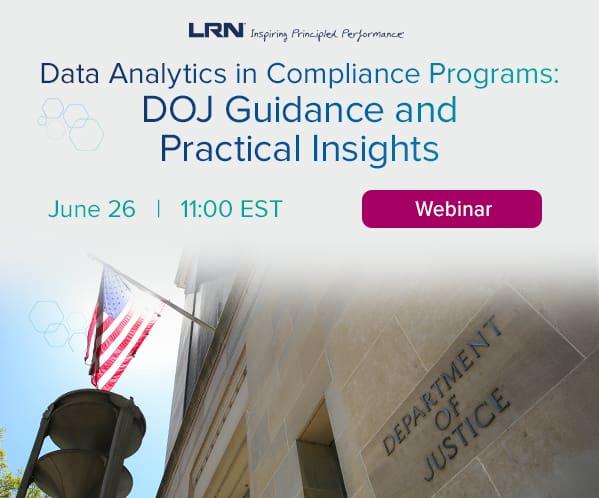It’s been the better part of two decades since a relatively common risk management mechanism — an interest rate swap — served as a scapegoat for a long, deep economic recession. Could our current financial crisis, which just this week saw First Republic Bank seized by federal regulators and subsequently taken over by JP Morgan, bring vindication to the humble rate swap? Greenspoon Marder’s Howard Mulligan makes the case.
Since the late 1970s, interest rate swaps have been used as a mechanism for managing risk. Also known as interest rate protection agreements, swaps emerged as large banks, which do most of their lending on a floating rate basis (as opposed to fixed), began using swaps to leverage their fixed-rate borrowing capacity and obtain lower-cast floating rate funds.
Swaps gradually became broadly used, not just by large international financial institutions, but by smaller banks as well as medium-sized and small businesses for interest rate protection relative to their modest lines of credit. For decades after that, interest rate swaps were perceived as somewhat pedestrian and typically vanilla forms of financial instruments.
Fast-forward to 2008: Swaps begin to dominate the headlines of the financial press and are set to become the bugbear of a simmering global financial crisis. By 2010, the zeitgeist was such that, when seated in a Manhattan restaurant adjacent to a structured finance lawyer, the well-groomed would insist on moving to another table.
The current financial turmoil, which just seems to breed more and more turmoil, has returned swaps to the fore of the national conversation — but this time, in a completely different way. In fact, such current events may be harbingers of a long-overdue vindication for the much-maligned professionals that inhabit the derivatives space.
Risky Business: Important Lessons From SVB’s Demise
When all is said and done, it’s likely that Silicon Valley Bank’s failure will be traced back to one serious flaw — shoddy risk management. Supply Wisdom’s Atul Vashistha shares the lessons that all companies should take away from this fiasco, even if they weren’t directly affected.
Read moreDetailsWhat are rate swaps?
In a nutshell, an interest rate swap is a contract between two parties, typically outlined on a standard form created under the auspices of the International Swaps and Derivatives Association (ISDA), to exchange one stream of interest payments for another, over a contractually outlined period.
Typically, interest rate swaps encompass the exchange of a fixed interest rate for a floating rate. Interest rate swaps are a subset (along with variations, such as credit default swaps and total return swaps) of a category of financial instruments known as derivatives.
Similar to other derivatives, interest rate swaps are traded on exchanges, but only on over-the-counter exchanges. From a legal practitioner’s point of view, the swap contract consists of the ISDA form, as supplemented by a confirmation, which alters the standard form to reflect the business deal and sets forth the precise terms thereof. Specifically, the confirmation will contain items like the start date, maturity date, respective interest each counterparty is to receive from the other and the schedule of payments (annually, monthly quarterly, etc.), as well as a plethora of more specific protocols.
In a typical interest rate swap, only interest payments are exchanged. Each counterparty to the swap does not take ownership of the corollary counterparty’s financial obligations, exchange debt assets or pay the full amount of interest due on each payment date. Rather, counterparties agree to pay each other the difference in payments as specified. They do not exchange debt assets, nor pay the full amount of interest due on each interest payment date — only the difference is due.
In theory, each counterparty derives what it desires from the swap arrangement. One counterparty obtains risk protection by operation of a fixed rate, while the other counterparty garners exposure to potential financial gain from a floating rate.
However, the swap arrangement produces winners and losers, as ultimately one counterparty will attain a financial profit while the other sustains a loss. If interest rates increase or spike during the swap term, then the counterparty on the receiving end of the floating rate will profit and the party receiving the fixed rate will incur a loss. Conversely, if interest rates go down, the counterparty receiving the guaranteed fixed rate will be the winner, while the counterparty getting payments at the floating rate will be the loser, as the amount of the interest payments it receives will decline. The extent of the win or loss to each counterparty will depend on the relative rate of the movement in actual prevailing interest rates. Over the term of the swap contract, the party that is then in the “win” position is commonly referred to as “in the money.”
Swaps evolve and Congress acts
As the structured finance paradigm evolved in the 1990s, lawyers began to use ISDA swap contracts to mitigate interest rate fluctuation risks confronting securitization trusts. Because the senior tranche of asset-backed securities being issued by the trust were to be AAA-rated, a non-AAA swap counterparty would require backing from a suitably rated guarantor. An analysis would have to be conducted to determine whether the swap exposure would be so extreme as to result in an impermissible level of recourse back to the sponsor of the securitization and prevent the issuer’s counsel from rendering the crucial “true sale” opinion.
Notwithstanding the presence of the AAA guarantor, investors in the asset-backed transaction would have to be apprised of the risk of nonperformance by the swap counterparty. Gradually, securitization transactions moved beyond using just interest rate swaps and began to use credit default and total return swaps, in furtherance of risk mitigation. By the turn of the 21st century, swaps had evolved into more than just risk mitigation components of structured finance transactions and began to become the central features of those transactions.
Financial institutions rolled out stand-alone synthetic transactions, with swaps embedded, such as issuances of structured notes and credit-linked notes, while using the time-proven ISDA documentation. As a result, the roster of lawyers working with ISDA forms expanded dramatically.
In structuring the derivative arrangement, each counterparty is taking the risk that the other counterparty will not be able to perform its financial obligations. When dealing with large companies or financial institutions, counterparty risk is usually relatively low. But if one of the two parties default and is unable to meet its obligations under the interest rate swap agreement, it would be difficult for the other party to collect. The counterparty would have an enforceable contract, but following the legal process might well become a long and uphill climb. This was particularly devastating in the Lehman Bros. bankruptcy, as the debtor institution defaulted on literally thousands of swap contracts with exposure running into the billions.
Counterparty risk actualization was widely perceived and reported to be among the primary instigating factors precipitating the 2007-08 financial crisis. In response to this perception, in 2010, Congress passed the Dodd-Frank Act which, in broad scope, was intended to minimize systemic risk of derivatives trading, create transparency in derivatives markets and preclude entities holding customer deposits from engaging in derivative trading that Dodd-Frank defined as “speculative.”
Yet, because of the outcry for reform and search for scapegoats, the standard interest rate swap contract became ensnared in an enforcement and regulation dragnet intended to target edgier and riskier synthetic and derivative securities.
What this has to do with recent bank failures
Fifteen years later, we find ourselves reflecting on the events of 2007-08, while apprehensively contemplating what our imminent deployment onto the beaches of a burgeoning new crisis may hold in store.
The period after the 2007-08 crisis was a time of unprecedented, nearly zero interest rates that continued for over a decade. Under those conditions, the risk of interest rate spikes was perceived as remote, if not non-existent. Thus, strategies for interest rate risk insulation, through interest rate swaps, were moved to the back burner.
In such a period of remarkably low interest rates, banks certainly could not rely on interest income. To bolster profits (and garner bonuses based thereon), bankers and traders began to speculate in the types of risky investments that Dodd-Frank was specifically intended to curtail. These banks invested a substantial percentage of deposit amounts in U.S. government treasury-backed home mortgage-linked securities and U.S. Treasury securities with relatively distant maturities.
Whether it was because of these narrow opportunities for profit, the dark reputational shadow that continued to be cast on so-called toxic derivatives, or an overly narrow reading of the provisions of Dodd-Frank, many financial institutions began pursuing a “zero hedge strategy.” In fact, a great number of banks were hardly using any interest rate swaps at all.
After the Federal Reserve’s aggressive interest rate hikes in 2022-23, a devastating bond market fire sale was precipitated across the capital markets, resulting in a steep decline in the existing securities holdings of many banks.
Moreover, these same Fed rate hikes simultaneously ambushed hedge funds, private equity funds, venture capital funds, large corporations and tech companies, such that they desperately needed to withdraw cash that had previously been on deposit at various financial institutions.
Caught blindsided by all this activity, and by not having swap protection against precipitous interest rate fluctuations, many banks found themselves forced to liquidate a massive amount of government-backed securities as well as equity securities, in an attempt to strengthen their financial positions and satisfy risk-based capital requirements.
All of these events coalesced in such a tragic manner because, with no interest rate protection, banks were completely vulnerable to the fluctuations triggered by the Fed’s aggressive actions. Forensic audits conducted thus far have revealed that the impact of these cascading events could have been mitigated through a basic application of an interest rate hedging strategy. But, in the absence of such a strategy, many banks have been left with only a miniscule amount of interest rate swaps and prodigiously long positions in asset-backed securities and Treasury bonds.
Regulators should be cognizant of the fact that the previous financial crisis and our current one are significantly different in terms of causation and impact, and prescriptions should focus on the malignancy at hand. By no means do current market conditions call for a redux of outdated fixed fortifications against “toxic” derivatives. Undoubtedly, some will suggest dusting off the early drafts of Dodd-Frank and resurrecting the restrictive terms that were not then implemented. In a crisis engendered by feckless monetary endeavors, the worst proposal would be enacting legislation casting further restraints on derivatives, the instruments that could have mitigated the current turmoil.
It is said that every tragedy contains some modicum of irony. The current financial turmoil and looming descent into another financial crisis is no exception. Here, the irony relates to derivatives, the precise financial instruments that purportedly caused the earlier crisis. The current situation brings us full circle, as derivatives are now enjoying somewhat of a renaissance as the overlooked “white knights” that could have saved the day.
In any event, the takeaway from the current epidemic of business failures is this: The current level of financial upheaval could have been averted if financial institutions had only used swaps.




 Howard Mulligan is a partner in the corporate and business practice group at Greenspoon Marder in New York. He focuses his practice on the intersecting disciplines of corporate law, mergers and acquisitions, structured finance, fund formation, commercial real estate, securities law, capital markets and business restructurings.
Howard Mulligan is a partner in the corporate and business practice group at Greenspoon Marder in New York. He focuses his practice on the intersecting disciplines of corporate law, mergers and acquisitions, structured finance, fund formation, commercial real estate, securities law, capital markets and business restructurings. 








